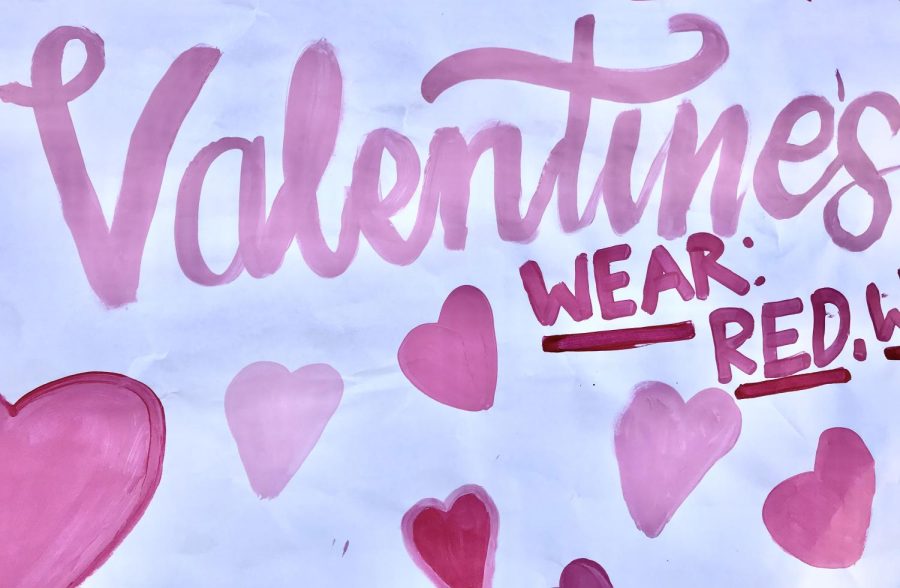Love beyond borders: Valentine’s Day celebrations around the world
Valentine’s Day can be traced back to the ancient Roman era, gradually adapting into a romantic, modern, and love-filled holiday celebrated in every corner of the globe.
Throughout the past century, the essence of Valentine’s Day has traveled far and wide, adapting to the cultural traditions of various locales around the world and evolving from a celebration of love into a global festival of something greater.
North America
In celebration of Valentine’s Day, people exchange flowers, jewelry, and sweet treats while hosting romantic dinners where proposals are a common occurrence. Young students also share specially-crafted Valentine’s cards imbued with expressions of love, light, and warmth.
“People buy a lot of food and gifts for their loved ones. There are date nights at nice restaurants or personal dinners with flowers and candles. It’s a time to be personal with someone you love,” said Aimee Sitter (‘24).
Latin America
El Día del Amor y la Amistad, otherwise known to be the day of love and friendship, celebrates Valentine’s Day with a Latin American twist. Chocolates and flowers are often reciprocated amongst close peers to celebrate the joy of friendship (as opposed to romance-related affairs).
Additionally, in Colombia, Bolivia, and other South American countries, the holiday itself has successfully been repositioned to mid-September in order for traders to sell an increased number or roses and sweets (during a month without any other festivities). Brazil, on the other hand, have moved their version of Valentine’s Day (Día de los Novios) to the month of June so that it coincides with their annual carnival festivities.
“The celebration is very similar to the US, meaning it is symbolic of doing kind gestures, exchanging cards, baking cakes. There’s a lot of mixing the excitement of carnival festivities with Valentine’s celebration. It is just a fun time,” said AV Spanish teacher Karen Lord-Eyewe.
France
Valentine’s day in France is celebrated with authentic French chocolates, roses, jewels, and more. However, the holiday is often reserved for married adults and romantic couples (as opposed to the younger generation), where lovely evenings are a common occurrence.
“In France, Valentine’s Day is celebrated more amongst lovers. It is a very romantic holiday where gifts are definitely more expensive. There are candlelit dinners, flowers, and other expressions of love. Also, in France, the expression ‘to be my Valentine’ does not exist. It is not such a big deal like in the US,” said AV French teacher Manja Benadjaoud.
Asia
In Japan, it is customary for women to gift chocolates to male friends, colleagues, and loved ones, with differing types of sweets conveying individualized meanings. March 14, known as White Day, is when men are expected to reciprocate with their own gifts. Similarly, the last day of Spring Festival celebrations serves as the equivalent of Valentine’s Day in China and other Asian countries that celebrate the Lunar New Year.
Some countries, such as Pakistan, also celebrate with their own versions of the holiday (Haya Day), which emphasizes modesty and highlights love within the context of Islamic culture.
“Japanese tend to inherit all types of different cultures. They enjoy Valentine’s day. Once you receive the chocolate, you return back cookies and sometimes a necklace. Anything that is three times more expensive,” said AV Japanese language teacher Rieko Murphy.
Middle East
Valentine’s Day celebrations took place in various shops and restaurants across the region, with decorations such as heart-shaped balloons and red flowers on display. Also, in Saudi Arabia, a celebration of friendship called Galentine’s has become a popular spectacle amongst the youthful.
Some parts of the Middle East, however, do not observe the celebration due to cultural and religious norms that discourage dating and other expressions of love and romanticism.
Africa
Valentine’s Day has become increasingly popular in Africa, with celebrations ranging from exchanging gifts, going on romantic dates, and participating in themed events. In some African countries, Valentine’s Day celebrations have also been blended with local cultural practices, such as gift-giving and the exchanging of love letters or poems in Nigeria, and the Zulu love letter ceremony, where women present beadwork to their romantic partners in South Africa.
“Due to the extensive colonization of the African continent, European and Western influence is plentiful. Valentine’s Day and other Western celebrations have become widely celebrated throughout the region,” said former South African resident Jignesh Kantilal.
A world united
Whether it is with chocolates, flowers, or simply a heartfelt message, the universal language of love and friendship threads the fabric of Valentine’s Day, transcending the borders of our world and uniting people along the way.
Your donation will support the student journalists in the AVJournalism program. Your contribution will allow us to purchase equipment and cover our annual website hosting costs.

